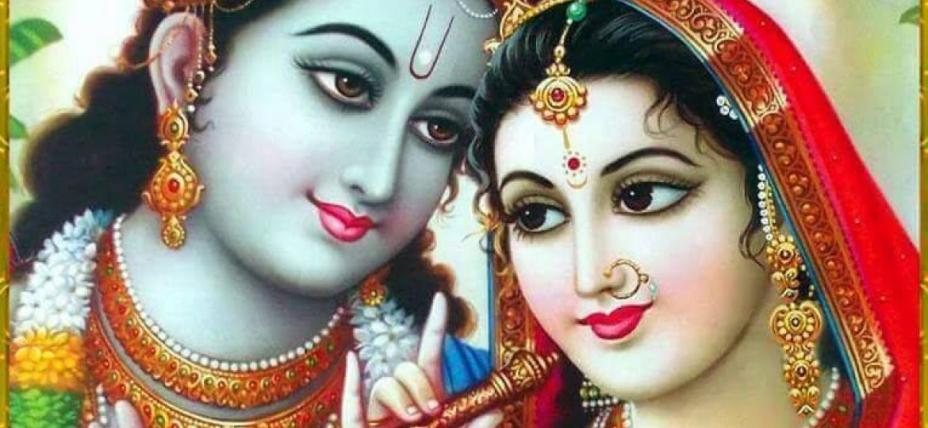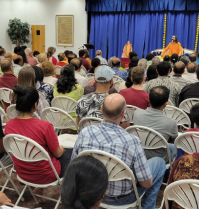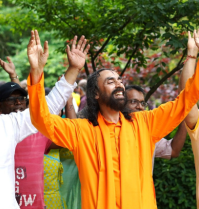What is Nirantar Bhakti?
Bhakti Yog / November 06, 2016

Nirantar means continuous, always, constant. So nirantar bhakti, by definition, means constant remembrance of Guru and God. This is the third criteria to be maintained if we are to perfect our love for Radha Krishna. The easiest way to keep Guru and God in mind is to do roop dhyan i.e. visualize their image in our mind or always feel their presence with us. Ideally, we should always do so with one of the loving sentiments previously mentioned.
Since our mind is material, any worldly thought it generates will also be material and in one of the three modes of Maya—the mode of goodness (sattvic), passion (rajasic), or ignorance (tamasic). According to Shree Maharajji, every second we allow material thoughts to enter our mind, we are sinning. This is because the mind is a gift from God and is meant to be engaged in service to Him. As a result, its use for material pleasure has negative consequences. Even if we do a good deed (sattvic behavior), it does not serve us well because it is binding and will drag us back into these 8.4 million species of life from which we are trying to uplift ourselves. Sattvic thoughts lead us to one of the seven layers of heaven which are also material.
Given the one mind we have, if we are constantly thinking of Radha Krishna, then we have no time to think about anyone or anything else (principle of ananyta). When we keep in background the saying, “the mind alone is the cause of bondage and liberation” then it behooves us to keep Guru and God in mind at all times.
Let’s try to understand the importance of this concept with examples. Let’s say we water a plant every day and see it flourish and grow beautifully. What happens when we stop watering it? It will be fine for the first day or two but will eventually start to wither. When we reduce the frequency with which we water it, its impact on the plant will be noticeable – it will not grow and flourish as well as it used to when we watered it daily. Our bhakti is like the plant – it requires constant attention.
Think of another more relatable example of going to the gym. Most people make a New Year resolution and for the first month or so coax themselves to get to the gym either in the morning or in the evening. Eventually, for some reason such as vacation or sickness, there is a lapse. Now when one comes back from vacation or recovers from an illness, it becomes harder to motivate oneself to go to the gym every day and the first day is the hardest. It takes a big push to overcome the initial inertia of going to the gym. Once we start going for the first couple of weeks, it gradually becomes easier until we get back into the habit of going every day.
Similarly, our bhakti is no different – it needs to be nourished – not weekly, daily, or hourly but constantly. Any lapse has the potential to hold us back in the material world. It needs constant vigilance to keep the mind focused in the divine realm. And the results are well worth it!
When we start thinking of Guru and God, the mind will not immediately be focused on them at all times. This is to be expected. The mind is made up of material elements so it is naturally drawn to anything material. Constant practice will help ensure that it stays in the divine realm. The secret to doing this is to practice taking the mind to the divine realm during sādhanā or meditation. Do this twice a day for a short period of time and gradually increase both the duration and frequency. This means if we start with a 5 min focused meditation twice a day, gradually increase it to 10 min, 20 min or 30 min a day. Alternately, start doing 5 min meditations two, three, then four, then five times a day and build it up gradually. The results will be noticeable!
Practice these principles of ananyta, niskamta, and nirantar bhakti and come back and share your results. We’d love to hear your story!

























